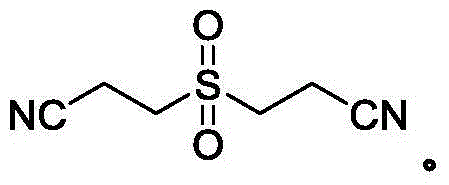High-temperature electrolyte for lithium battery
An electrolyte, lithium-ion battery technology, applied in secondary batteries, circuits, electrical components, etc., can solve problems such as insufficient performance and attenuation, achieve good high-temperature cycle performance, and improve cycle performance.
- Summary
- Abstract
- Description
- Claims
- Application Information
AI Technical Summary
Problems solved by technology
Method used
Image
Examples
Embodiment 1
[0025] The positive active material is LiMn 2 o 4 , the LiMn 2 o 4 , binder PVDF, and conductive agent super P in a mass ratio of 8:1:1, mixed with organic solvent NMP to form a paste, evenly coated on 20 μm aluminum foil, dried in vacuum at 120°C for 12 hours, rolled, sliced, weighed amount, and then vacuum-dried at 80°C for 15 hours to make a positive electrode sheet. The positive electrode sheet, the negative electrode Li sheet, the separator Celard2325, and the electrolyte 1mol / L LiPF 6 ,EC:DMC:EMC=1:1:1 (wt%), 0.5wt% SPDN in the vacuum glove box (H 2 O, O 2 Less than 10ppm) assembled into a 2025-type button battery.
Embodiment 2
[0027] Except for adjusting the amount of SPDN to 1 wt%, other compositions and proportions of the electrolyte and the preparation method and steps of the battery are the same as in Example 1.
Embodiment 3
[0029] Except that the amount of SPDN was adjusted to 2wt%, other compositions and proportions of the electrolyte and the preparation method and steps of the battery were the same as in Example 1.
PUM
 Login to View More
Login to View More Abstract
Description
Claims
Application Information
 Login to View More
Login to View More - R&D
- Intellectual Property
- Life Sciences
- Materials
- Tech Scout
- Unparalleled Data Quality
- Higher Quality Content
- 60% Fewer Hallucinations
Browse by: Latest US Patents, China's latest patents, Technical Efficacy Thesaurus, Application Domain, Technology Topic, Popular Technical Reports.
© 2025 PatSnap. All rights reserved.Legal|Privacy policy|Modern Slavery Act Transparency Statement|Sitemap|About US| Contact US: help@patsnap.com



